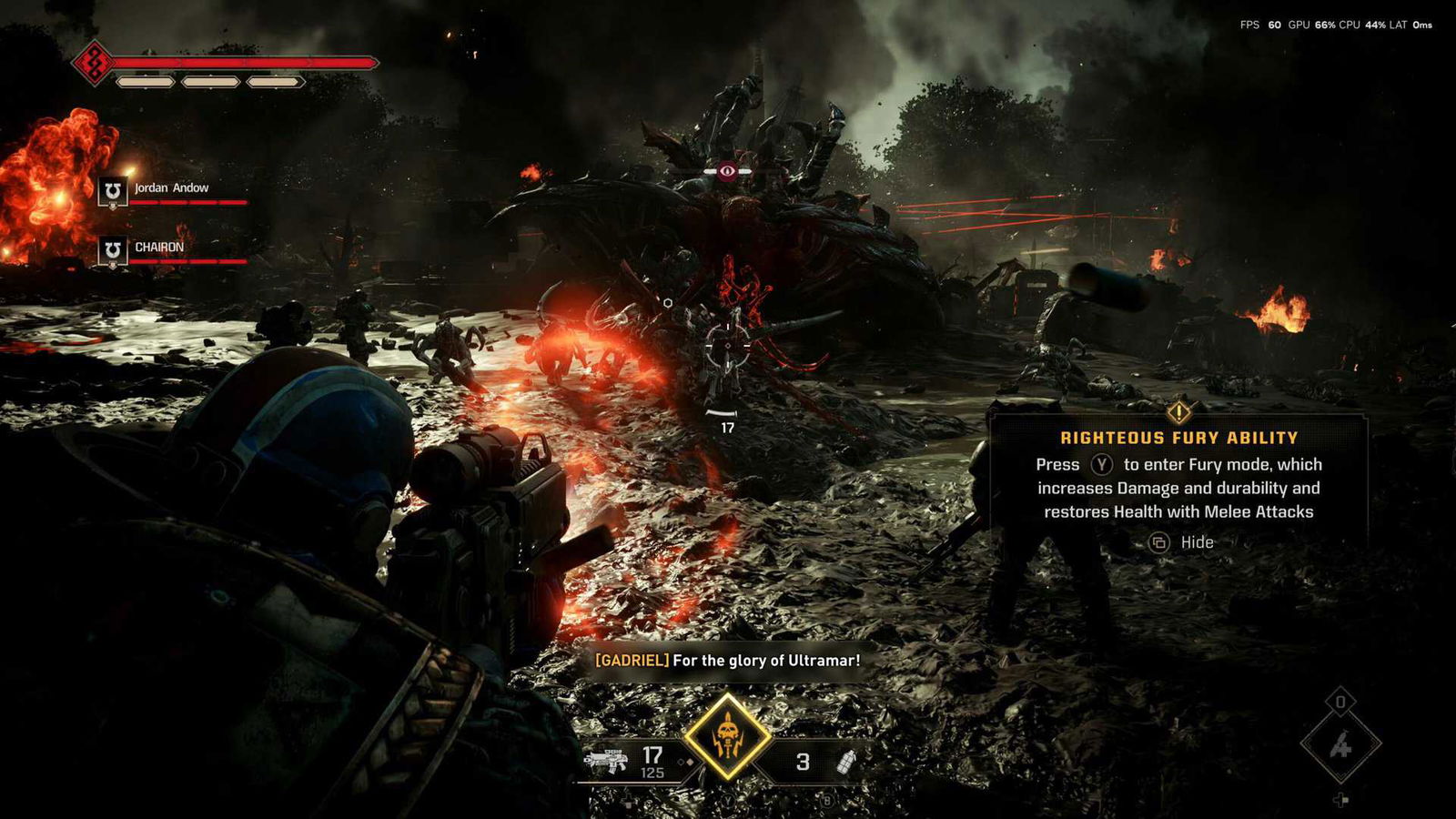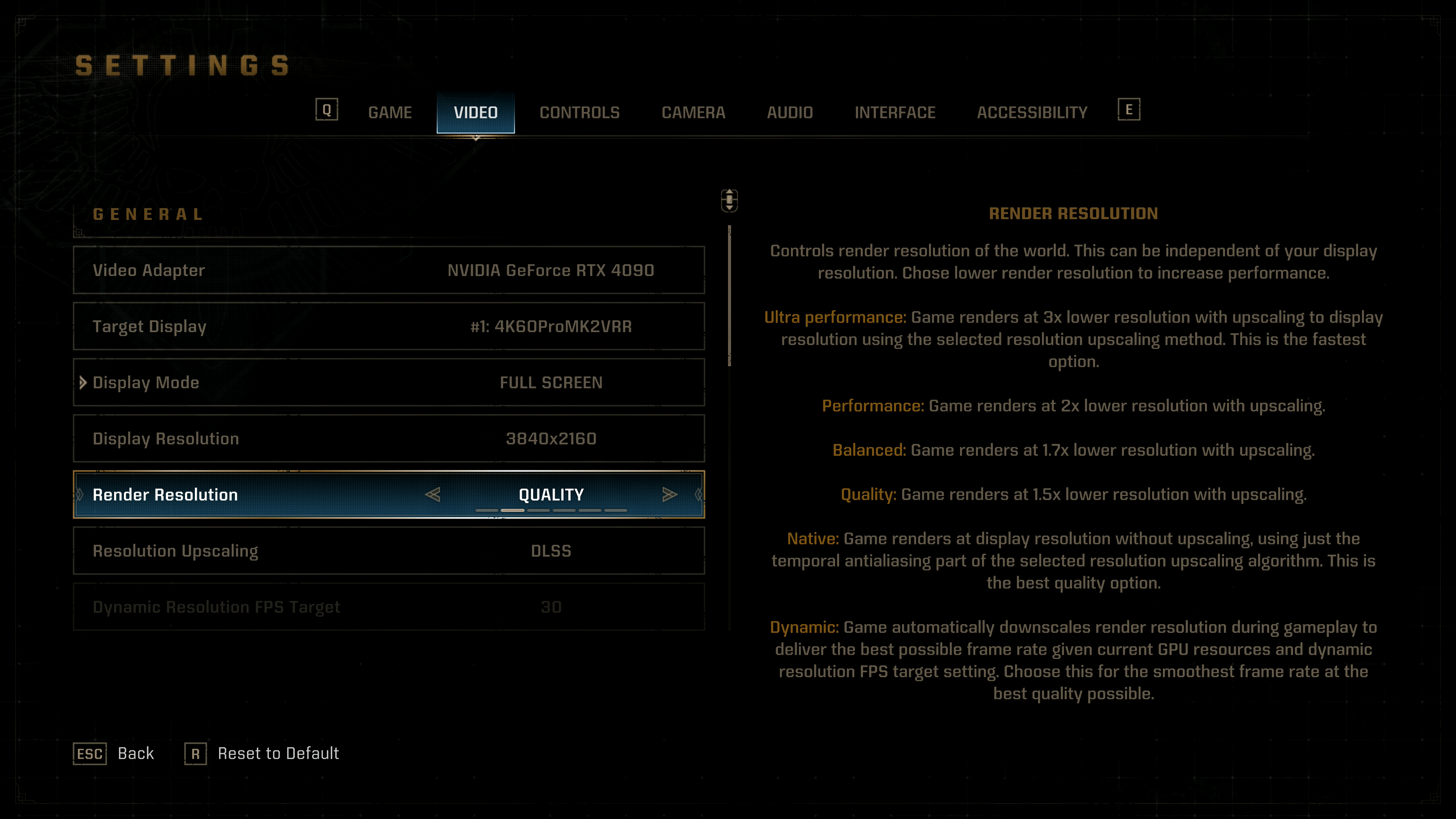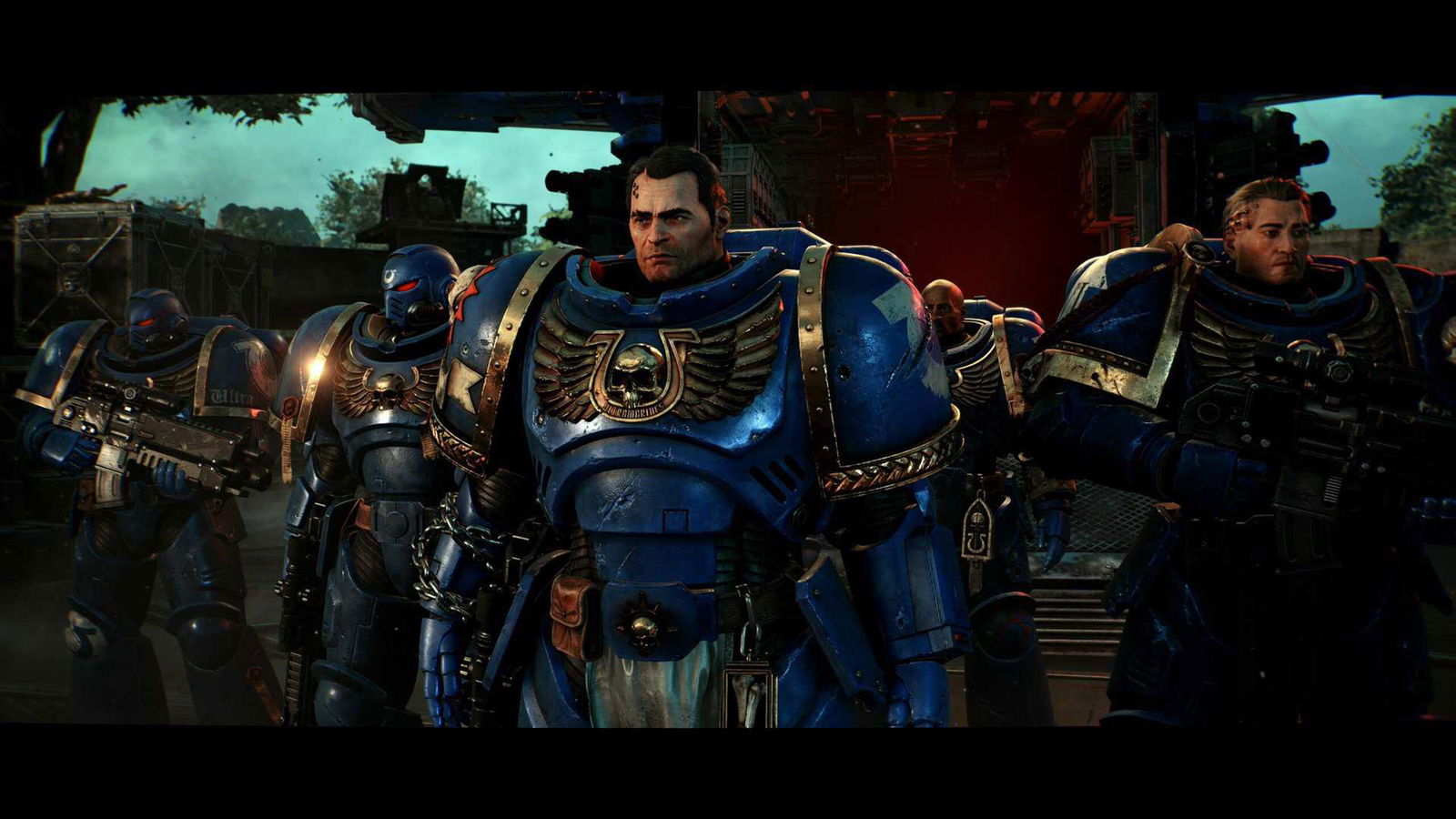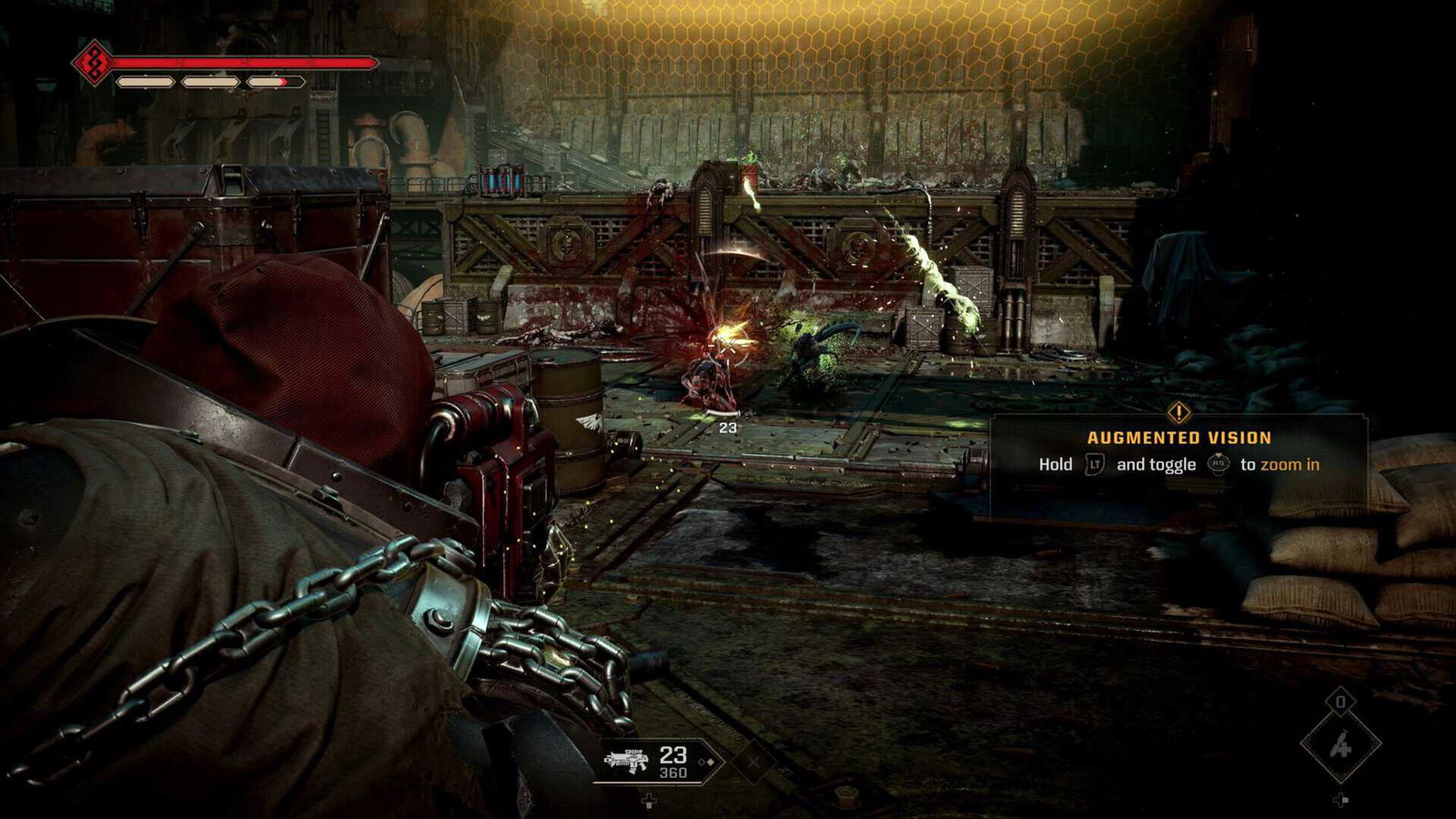We have finally returned to the Warhammer 40k universe in third-person action with a sequel to 2011’s Warhammer 40,000: Space Marine by Relic Entertainment. This time around, Saber Interactive takes the reins for Warhammer 40,000: Space Marine 2 and they have certainly delivered something special. There will be some light story spoilers ahead.
Game Name: Warhammer 40,000: Space Marine 2
Platform(s): PlayStation 5, Xbox Series X|S, PC (reviewed)
Publisher(s): Focus Entertainment
Developer(s): Saber Interactive
Release Date: 9th September 2024
Where do we begin
In Space Marine 2, the story takes place two hundred years after the events of the first game. Players will take control of Demetrian Titus, who, at the start of this sequel, has served in the Deathwatch for nearly a century. After the events of the initial mission—which I won’t spoil here—Titus undergoes the Rubicon Primaris, a procedure that elevates Firstborn Marines into the taller, stronger, and faster Primaris Marines. From here, the real story begins, unfolding into a tale full of twists and turns that kept me engaged the entire time. Playing through this campaign reminded me very much of the first time I played Gears of War in 2006. It has that same dark and brooding atmosphere, combined with badass yet complex characters.
Alongside the main campaign, six additional missions coincide with the story, but I won’t spoil what they are or how you interact with them here.
Structure, Enemies, and Gameplay
The story isn’t where the Gears of War similarities end either. From a structural standpoint, missions are very linear with some larger areas thrown in, but even these only have one path to actually advance your objective. So, this is not a massive open-world or even an open-area game. For me, though, I loved this more condensed design, which we don’t often get anymore.
I’m also pleased to say that, even with the game’s smaller scope, it doesn’t feel small. There are many moments in the gameplay that give a great sense of scale—a scale that I’ve only felt in one other linear-level design game: World War Z, which, of course, was also developed by Saber Interactive. Just like that game, Warhammer 40,000: Space Marine 2 is built on the Swarm Engine, which was specifically made to handle hundreds of enemies on-screen at one time. Seeing hundreds of Tyranids charging at you or piling on top of each other to reach you is genuinely mind-blowing at times. This helps to add tension to the game and grounds you as a small part of a much larger universe. If you thought World War Z looked amazing, get ready to be astounded by this game.
If you don’t know, the Tyranids are horrific insect-like creatures controlled by a hive mind, and this particular group is believed to be a splinter of Hive Fleet Leviathan. They come in several different forms, from standard grunts to grabbers and more, offering a decent variety of enemies. They are the main foes in Space Marine II, but they won’t be the only ones you encounter. That’s right—the forces of Chaos return, and these traitorous followers of the daemonic gods are as formidable as ever. For those unfamiliar with the lore, a quick Google search will give you all the background you need.

But that’s not all—you also have access to two guns: a sidearm, such as a bolt pistol, and a main weapon, which can be some form of rifle, like an auto or carbine. You can pick up different versions of weapons, and some even have a secondary function, like a grenade launcher that can be activated with a click of the right stick. When using a gun, you can push enemies back in combat by holding the right bumper, marking them with a reticle, and pulling off a quick-shot with the press of the right trigger. These quick-shots are very useful for thinning out groups of grunts or creating space to pull out your auto rifle.
It’s great that the game allows you to pick up different weapons, but I found that most of them felt and sounded quite similar to use, aside from their additional functions. Personally, I gravitated more toward melee combat, which felt extremely weighty and visceral.
Part of what made melee so fun was the ability to parry. When you see a blue circle around an enemy, they’re about to launch an attack that you can parry. You do this by pressing the left bumper. Time it correctly, and you’ll immediately execute smaller grunts, while opening up larger foes to a melee combo. However, keep in mind that larger enemies can also perform unblockable attacks, shown by a red ring, which you must dodge using the A button.
Multiplayer
Warhammer 40,000: Space Marine 2 features both Co-Op and PvP multiplayer. However, due to the limited number of players available during the review period, I was only able to test the Co-Op portion with my buddy, Keith. During our sessions, we played through most of the game and were able to save our progression, which was a nice change of pace from other games where Co-Op doesn’t serve much purpose beyond simply letting you play with someone else. Since it was just the two of us, we had an AI-controlled player fill the third slot. For the most part, the AI was solid, assisting with enemies and reviving us when we went down.
Dare I say that the Co-Op in Warhammer 40,000: Space Marine 2 features some of the best online Co-Op implementation I’ve seen? Yes, even better than Helldivers 2. I’m confident that once this game drops, many players will leave Helldivers 2 and make a beeline for this game. It’s that Co-Op has a really nice flow to it, and I can’t wait for more people to jump on and see it for themselves.
Since I played on PC, there’s usually a messy attempt to get players into the game using Steam’s friends list, but not here. All you need to do is open your in-game system, add the player to your squad, and they receive an invite. If they accept, they are added to the game, and off you go for some mindless fun. Unlike the Soulsborne games, once you complete a mission, you aren’t sent back to your world—you can continue playing all the way to the end if you want to.
Going back to PVP, while I didn’t play it, I did want to set a few things straight – PVP is handled differently than PC. While everyone will be able to jump in and play missions via PVE, on the PVP end, you can only play within specific platforms. For example, PC and only play with PC (Steam and Epic), and consoles are stuck by playing with each other. Obviously, this was done to deter cheating and hacks, but it still feels like a missed opportunity. Other devs have figured this out, so why not take a page from their playbook?
Presentation and Performances
Visually, the game is stunning, with impressive environments, detailed character faces, and meticulously crafted armor. The cutscenes also look great, but the transition between these pre-rendered scenes and in-game gameplay can sometimes be jarring. But keep an eye out when doing an execution, because not only are they amazing to look at, but fun to perform.
I really enjoyed the audio—the score is powerful, and the sound effects are heavy but believable. Everything sounds as you’d expect, but there is one major issue: at least by default, while playing without a headset, the audio mix seems off. The music often drowns out dialogue while traversing from point A to point B. This doesn’t happen in cutscenes, so it doesn’t affect the major story moments, but you might miss out on character interactions and development. As with all games, you can adjust audio levels in the settings, but having to do this every time you switch audio devices can be a significant time-waster and frustration.
Speaking of audio, I must mention the voice performances. Space Marine 2 is an incredibly well-written game, and that writing is brought to life masterfully by the voice actors of the three main characters: Titus, Gadriel, and Chairon. In particular, Clive Standen, who takes over the role of Titus from Mark Strong, has added so much depth to the character that Titus has become a new favorite of mine.
Accessibility
Unfortunately, while there are some basic accessibility options available, such as colorblind modes and toggles for various press/hold gameplay actions, the accessibility features in Space Marine 2 are too bare-bones. The game needs more comprehensive options to enable a wider range of players to fully engage with this great experience.
Technical Performance
Hey folks, Keith subbing in here for the PC performance bits. So, as you know, I like diving into the PC-centric parts of PC games, and I’m happy to report that this game is no slough. In terms of visual options, there’s plenty to choose from, so you can tweak the game and get the best performance out of your PC as possible. There are plenty of upscaling options, ranging from Nvidia’s DLSS and AMD’s FSR, or TAA. I did find it odd that Intel’s XeSS wasn’t included, but I suppose that’s due to the status of Intel’s GPU hopes going down the drain. Or if you don’t want to use upscaling, you can go completely native and watch as your GPU melts under the stain. OK, I’m kidding with that last part… partially.
Now, I already know what you might be thinking: Why play the game on such a high-end PC? Well, I didn’t forget about those of us with less powerful setups. I also tested the game on a Razer 14-inch Blade, featuring an AMD Ryzen 9 8945HS and an RTX 4070. With the settings adjusted to high and medium and DLSS set to quality, the game ran between 70-90 FPS at 2560×1440. Lowering the settings to balanced mode provided even more frames. However, keep in mind that this is a laptop CPU/GPU combo with power limitations; a similar desktop setup would likely squeeze out more performance and be less noisy.
Oh, and while the game doesn’t include ultrawide / 21:9 support at launch, Saber has stated this will be coming after the launch. There’s no specific mention of when, but it’s on their roadmap.
Regardless, it’s impressive what Saber has accomplished here, and it’s clear that the team behind World War Z has brought their expertise to this game. The swarms of enemies are impressive, and I didn’t notice any stuttering. The only downside is that the game connects to online servers before and after a mission, leading to a lengthy delay between bouts.
On the other hand, I did encounter several minor and major issues while playing. For instance, I was unable to interact with certain required items until reloading at a checkpoint, and there were a few crashes that sent me straight to my dashboard. Fortunately, the game’s autosave and checkpoint system meant that I never lost more than a minute or two of progress. This is something to be aware of, but fortunately, the developers are aware of these issues and are actively working on fixes.
What About Handheld Gaming
Looking to play Warhammer 40,000: Space Marine 2 on your beloved Steam Deck or ROG Ally? Well, not right now, but later in an update. Saber has mentioned it is working on Steam Deck support, but it’s currently not ready. Soon…
Summary
In the end, Warhammer 40,000: Space Marine 2 was a blast from start to finish. With a story that surpassed all my expectations and arguably the most visceral, weighty gameplay since the original Gears of War, it delivers an exhilarating experience. The game is only held back by its limited accessibility options and some technical issues.
Review Disclosure Statement: A copy of Warhammer 40,000: Space Marine 2 was provided to us for review purposes. For more information on how we review video games and other media/technology, please review our Review Guideline/Scoring Policy for more info.
Affiliate Link Disclosure: One or more of the links above contain affiliate links, which means at no additional cost to you, we may receive a commission should you click through and purchase the item.
Warhammer 40,000: Space Marine II Review - Grim and Great
Summary
Warhammer 40,000: Space Marine II was a blast from start to finish. Only held back by a limited accessibility offering and some technical issues.
Pros
- Interesting story
- Outstanding visuals
- Powerful and impactful gameplay
- Linear with a sense of scale
- Runs great if you have the hardware
Cons
- Limited accessibility options
- Some technical issues
-
Warhammer 40,000: Space Marine 2 Review - Grim and Great




